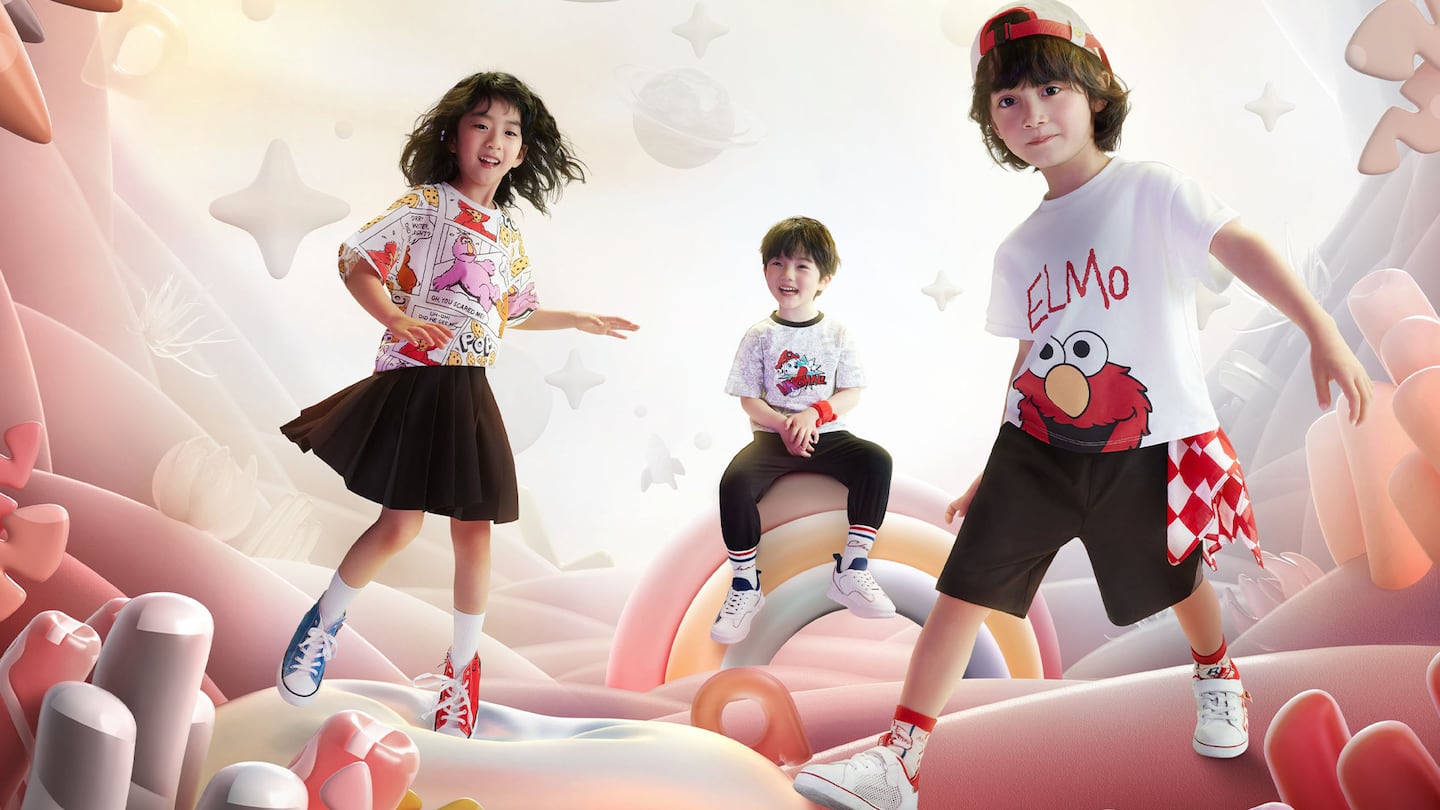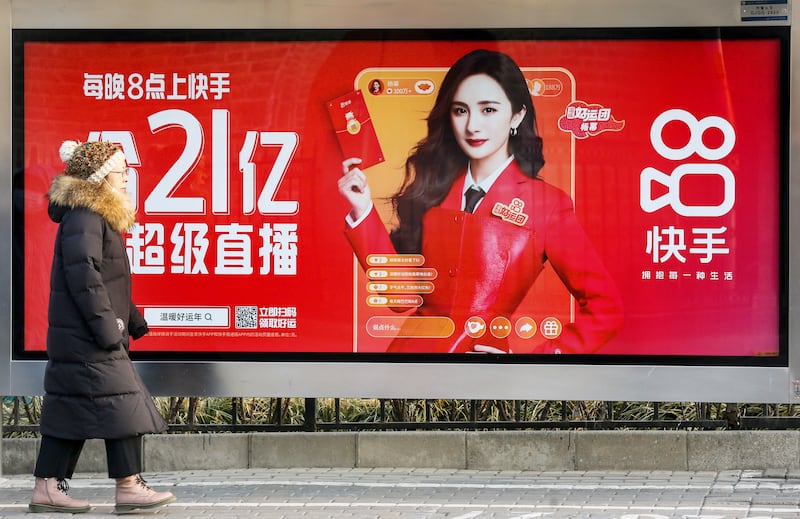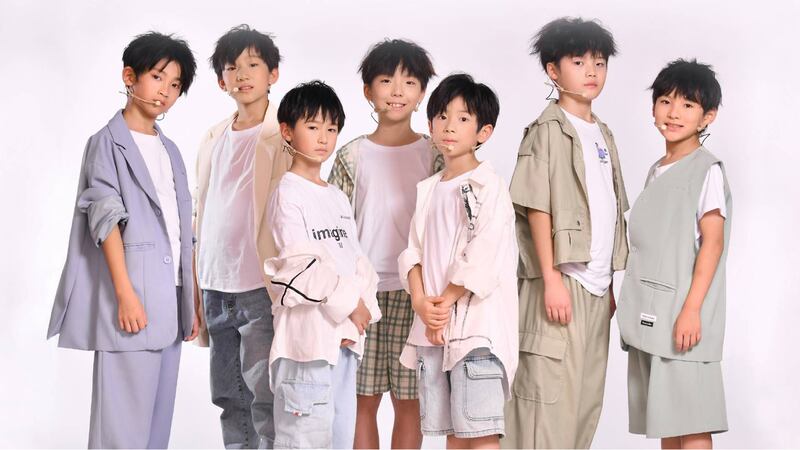
The Business of Fashion
Agenda-setting intelligence, analysis and advice for the global fashion community.

Agenda-setting intelligence, analysis and advice for the global fashion community.

As Chinese kids return to school this week, their parents are facing a new era of child rearing in the world’s most populous country — one that will likely coincide with impressive growth in the children’s fashion market.
Prior to the pandemic, China’s children’s fashion segment (encompassing both children’s clothing and footwear for newborn to 14-year-olds) was already growing at a rate faster than its men’s or women’s fashion sectors, clocking 12.5 percent year-on-year growth in 2019, according to data from market research provider, Euromonitor International.
In 2020, the pandemic caused a slight decline: the children’s fashion market in China dropped 3.75 percent year-on-year to a total value of 290.83 billion yuan ($44.85 billion). But the sector is expected to come roaring back this year, with Euromonitor estimating sales of 346.6 billion yuan ($53.46 billion) in 2021, representing growth of close to 20 percent year-on-year.
This boom is set to continue, with the market expected to reach 421.6 billion yuan ($65 billion) by 2023, at a compound annual growth rate (CAGR) of 13.17 percent (from 2020 to 2023).
ADVERTISEMENT
Looking to the future, there has been a lot of focus on the loosening of China’s infamous one-child policy as a further growth driver in kids’ consumer goods categories. A two-child policy was instituted in 2016, and a three-child policy was announced earlier this year, formally passing into law in recent weeks.
Though there are pressing reasons for Beijing to boost its historically low birth rate, the three-child policy has been met with widespread scepticism from the general population. Chinese parents say raising a child in cities such as Beijing, Shanghai or Guangzhou has become so expensive — and intensive, as competition for university places, for example, ramps up alongside the growing expectations of China’s burgeoning 400 million-strong middle class — that raising more than one child is an economic burden simply too great for many to bear.
Yang Zengdong, a teacher based in Shanghai, is the mother of two daughters. She was thrilled with the lifting of the one-child policy in 2016, having long desired a sibling for her oldest child, Chenchen, but she won’t be taking advantage of the new legal right to have three kids.
“I don’t think the three-child policy will have a big impact; it will only influence a small group of people. The majority still have no intention of having a third child,” Yang said.
The continued success of the Chinese childrenswear market, however, isn’t reliant on the three-child policy. While a baby boom would obviously bode well for this market, there are other factors driving growth in the kids fashion segment that aren’t going away any time soon.
A New Generation’s New Priorities
Today’s new generation of parents come from completely different economic and familial situations than their predecessors, leading to vastly different priorities, said Chen Shu, senior business strategy planning manager at Balabala, a Chinese childrenswear market leader with a 4,800 store-strong retail network in China.
“The mums who are having kids are now mainly post-90s and 99 percent of them grew up in single child families due to the one-child policy; they are very comfortable with a small-sized family,” Chen said.
ADVERTISEMENT
A new generation of parents has become more emotional, spontaneous and fashion conscious in the way they purchase childrenswear.
“For these young mums, price isn’t the first consideration [when shopping]. They are looking for something fun, interesting, trendy and they are willing to pay a brand premium if the brand is giving them what they want,” she added.
In other words, it’s not more kids, but higher proportional spending by family members of households with just one or two children that is likely to drive market growth.
According to Angelito Perez Tan, Jr., the chief executive of consultancy, RTG Group Asia, Chinese parents have previously taken a more “pragmatic” approach to buying childrenswear, conscious of how quickly kids grow out of clothing and also the fact that school age children in China are almost all required to wear school uniforms, lessening the need for a lot of clothes. But recently, that attitude has changed.
“A new generation of parents has become significantly more emotional, spontaneous and fashion conscious 10,” he said.
Chen says that, while this shift is driving the premium segment in particular (with growth in premium price points outpacing growth in the mass market for childrenswear in recent years), there aren’t large-scale players in this part of the market as yet, only niche local and international brands occupying tiny slivers of market share.
That might change soon with Balabala’s next move; it plans to launch a premium line in 2022 to capture the mid to higher-end of the childrenswear market.
“We still have the mass market price point, but we are increasing the price range to attract more consumers. A lot of consumers are upgrading what they are trying to buy and we still want to capture that market share,” she said.
A Shift in Influence
ADVERTISEMENT
As in the West, social media and the rise of “mumfluencers” on platforms such as Xiaohongshu have become a vital part of the purchasing journey for this new generation of Chinese mothers.
“The busy mums today might follow two or three KOLs (influencers known locally as key opinion leaders) to see what outfits they are recommending, to see what kinds of trends they are seeing for the next season and that will have a huge influence on their purchase decision,” Chen said, adding that Xiaohongshu in particular is a key tool for Balabala’s messaging.
Kids play a different role in the family than they did even ten years ago; they actually have a voice and their voice is very important.
As well as keeping abreast of the trends and changes impacting this generation of new parents, Shu explained that another societal shift in China has changed the way Balabala performs its market research and positions its products.
“Kids play a different role in the family than they did even ten years ago; they actually have a voice and their voice is very important,” Chen explained. “So we actually interview a lot of kids as well to see what’s popular in school, what are they talking about with their friends?”
In addition to collaborations with the usual western children’s entertainment giants, like Disney and Sesame Street, Chen says, these days Chinese kids are also increasingly into homegrown films, books and television shows. As a result of feedback from Chinese youngsters, Balabala will soon launch a collaboration with Jingling Meng Ye Luoli (Ye Luoli’s Fairy Dream), a popular Chinese animation.
International brands looking to capitalise on China’s children’s fashion boom had better move fast, and move smart, according to Perez Tan, Jr., who sees the broader trend towards domestic brands also evident in the children’s category.
“This can potentially create a challenge for international brands,” he said. “If [they aren’t] equipped to understand current domestic trends, or are unable to find ways to be culturally relevant, that disadvantage will only be further exacerbated.”
时尚与美容
FASHION & BEAUTY

Zheng Shuang and Other Chinese Brand Ambassadors in Trouble
Controversial Chinese actress Zheng Shuang has been hit with a 299 million yuan ($46.1 million) fine for failing to declare her true taxable income. Following a surrogacy scandal in January that saw her dropped as a brand ambassador for Prada, Chinese tax authorities say Zheng used “yin and yang” contracts (in which “official” and “unofficial” payments for entertainers are documented) to conceal her income. News of Zheng’s fine came hours after Chinese netizens began noticing the removal of several celebrities from local internet sites. Mystery surrounds the disappearance of Fendi ambassador Zhao Wei’s name from the credits of movies and TV shows she has starred in on major video streaming sites, including Tencent Video, iQiyi and Youku. (BoF)
China’s Anta Sees First Half Revenue Soar 55%, Reaching Record High
Anta Group revenue grew by 55.5 percent to 22.81 billion yuan ($3.52 billion) for the first half of the year, a record high. The result also represents a 54 percent revenue growth over the same period in 2019, prior to the pandemic. The revenue and share price of both Anta Group and Li Ning have been boosted by a boom in fitness-related categories in China, as well as a backlash against international brands (including Nike and Adidas) for their stance on sourcing cotton from the Xinjiang region. Anta Group’s e-commerce business contributed 27 percent of its overall revenue in the first half, an increase of 61 percent year-on-year. (BoF)
Perfect Diary’s Parent Company Sees Second Quarter Revenue Rise 53.5%
Yatsen Holding Ltd, one of China’s leading beauty companies, released its second quarter earnings report on Thursday, which showed quarterly revenue increasing by 53.5 percent to 1.53 billion yuan ($236.2 million) year-on-year. The firm’s non-GAAP net loss was 195 million yuan ($30.09 million), down from 234 million yuan ($36.11 million) in the first quarter. According to its latest financial report, Yatsen’s DTC customers increased by 13.3 percent to 10.2 million, but marketing costs were down 8.3 percent to 973 million yuan ($150.17 million), a number that still represents 63.8 percent of its total revenue for the quarter. (BoF)
科技与创新
TECH & INNOVATION

Douyin Rival Kuaishou Slumps, Spending Spree Drives Losses
Kuaishou, the operator of China’s most popular short-video platform after ByteDance’s Douyin, is grappling with an influx of rivals from Bilibili to WeChat. It’s going on a spending spree to try and maintain loyalty among the country’s youth, deploying a generous marketing budget into newer areas like e-commerce and gaming. Kuaishou Technology tumbled the most in nearly three weeks after reporting a wider-than-expected loss as the short-video giant increased spending to retain users. Monthly and daily active users slid from the previous quarter and its net loss of 7 billion yuan ($1 billion) exceeded the 6.25 billion yuan ($966.3 million) projected, even as sales rose a better-than-expected 49 percent to 19.1 billion yuan ($2.95 billion) for the three months ended June. (BoF)
China’s Pinduoduo Swings to Quarterly Profit on Online Shopping Boost
The Chinese e-commerce platform swung to a quarterly profit on Tuesday as people kept up their appetite for online shopping months after the easing of pandemic lockdowns. Pinduoduo, an interactive shopping platform, posted net income attributable to ordinary shareholders of 2.41 billion yuan ($372.1 million), compared with a net loss of 899.3 million yuan ($138.8 million) a year ago. Total revenue was 23.05 billion yuan ($3.56 billion). (BoF)
消费与零售
CONSUMER & RETAIL

Urban Outfitters to Exit China Market
The US retailer issued a statement on Tmall announcing it would shutter its flagship store on the platform. Its products will be removed from sale on September 12 and customer service will remain operational until September 24. Urban Outfitters has not yet set up any physical store footprint in China and is not available via any other e-commerce channels, which means its Tmall store closure also marks the brand’s departure from the China market. The Urban Outfitters Tmall store currently has about 1.14 million followers. Later, the brand posted an explanation on its official Weibo account which said the move was “temporary” and due to a global strategy adjustment. (BoF)
Chinese Millennials Take a Shine to Gold
Sales of gold bracelets, pendants, earrings and necklaces that draw on dragons, phoenixes, peonies and other traditional Chinese patterns and symbols are flying among consumers, especially those in their 20s and 30s, helping drive a rebound in gold demand in the country after a pandemic-induced slump. An e-commerce boom and national pride are fuelling the rise in demand for what is known as heritage gold jewellery, which requires intricate craftsmanship and can command premiums of 20 percent or more over conventional gold jewellery, industry executives say. The popularity of these new pieces began to take off in mid-2020 and helped gold jewellery demand in China the world’s top consumer of the metal — more than double in the first half of 2021 from a year earlier to pre-pandemic levels, according to the World Gold Council. (Reuters)
政治,经济与社会
POLITICS, ECONOMY, SOCIETY

Crackdown on Idol Culture Sees Disbanding of China’s Newest Boy Band
Panda Boys, China’s newest boy band, debuted on August 21 with their first song and music video, a pastel-laden synth pop number with a rap and Chinese opera interlude. But just three days later, the group disbanded, following outcry on social media over their young age and concerns of exploitation. The seven members, dubbed the “cubs” in promotional materials by their talent agency, range from 7 to 11 years old. Their introduction and disbanding comes amidst a broader crackdown on “idol culture” in China ensnaring celebrities, social media platforms and the entertainment industry more broadly. (CNN)
Chinese Factories Are Having Labour Pains
Labour shortages are materialising across China as young people shun factory jobs and more migrant workers stay home, offering a possible preview of larger challenges ahead as the workforce ages and shrinks. With global demand for Chinese goods surging this year, factory owners say they are struggling to fill jobs that make everything from handbags to cosmetics. Some migrant workers are worried about catching Covid-19 in cities or factories, despite China’s low caseload. Other young people are gravitating toward service-industry jobs that pay more or are less demanding. But China’s problems also reflect longer-term demographic shifts — including a shrinking labour pool — that will make it harder for China to keep supplying the world with cheap manufactured goods, potentially adding to global inflation pressures. (The Wall Street Journal)
China Decoded wants to hear from you. Send tips, suggestions, complaints and compliments to our Shanghai-based Asia Correspondent casey.hall@businessoffashion.com.
With consumers tightening their belts in China, the battle between global fast fashion brands and local high street giants has intensified.
Investors are bracing for a steep slowdown in luxury sales when luxury companies report their first quarter results, reflecting lacklustre Chinese demand.
The French beauty giant’s two latest deals are part of a wider M&A push by global players to capture a larger slice of the China market, targeting buzzy high-end brands that offer products with distinctive Chinese elements.
Post-Covid spend by US tourists in Europe has surged past 2019 levels. Chinese travellers, by contrast, have largely favoured domestic and regional destinations like Hong Kong, Singapore and Japan.